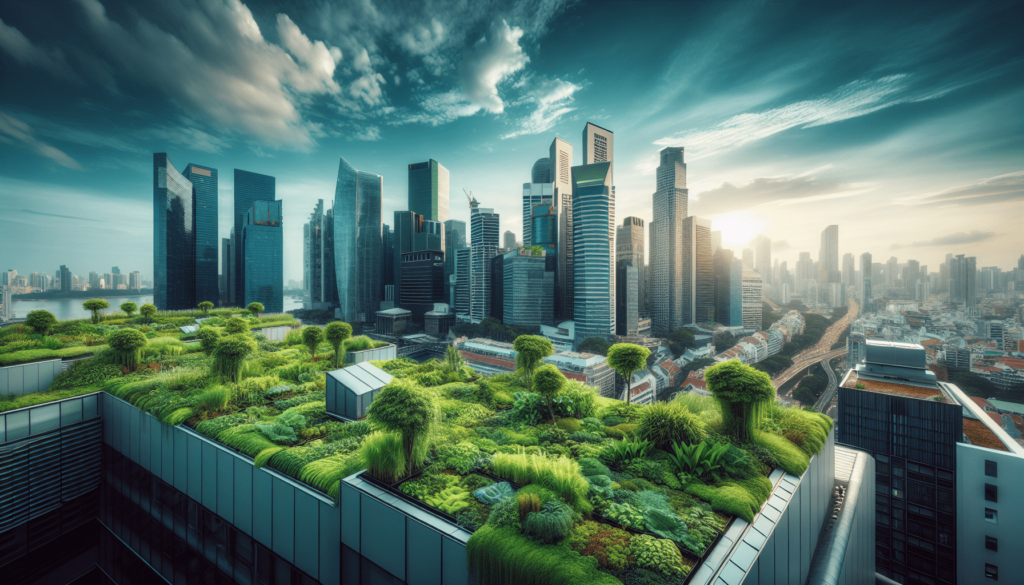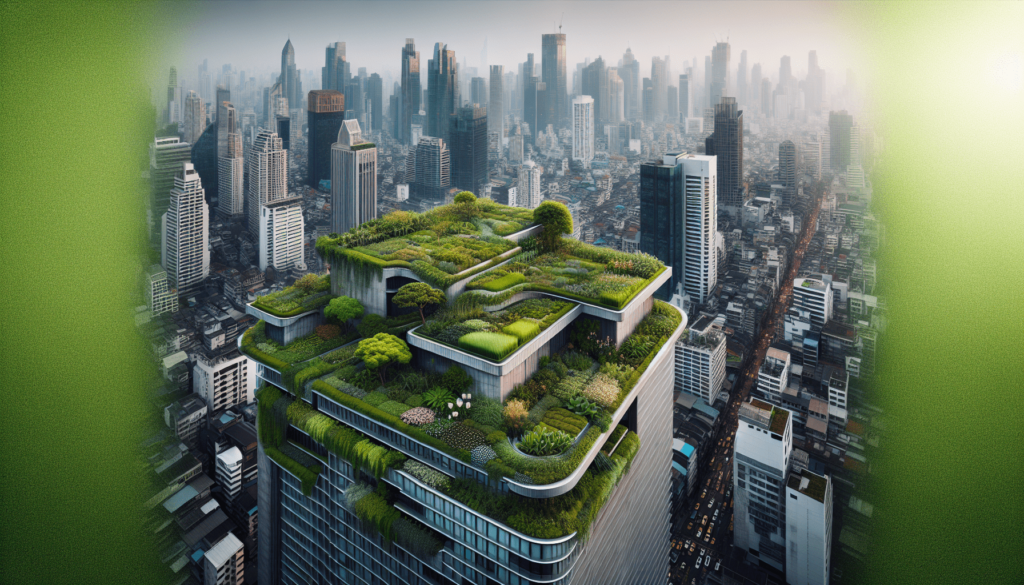Welcome to “The Benefits of Green Roofs in Urban Environments.” In this article, you will discover how green roofs can provide numerous advantages in densely populated cities. From reducing urban heat island effect to improving air quality and promoting biodiversity, these eco-friendly rooftops offer a sustainable solution to the challenges faced by urban areas. Learn how incorporating green roofs into city landscapes can contribute to creating healthier and more vibrant communities for all.
Have you ever considered the benefits of green roofs in urban environments?
Urban environments can be notoriously hot, polluted, and lacking in green spaces. Green roofs offer a potential solution to these issues, providing a range of benefits for both the environment and those living and working in urban areas. In this article, we will explore the many benefits of green roofs and why they are becoming increasingly popular in urban environments.

What are Green Roofs?
Green roofs, also known as living roofs or eco-roofs, are roofs that are partially or completely covered with vegetation. This vegetation can range from simple grasses and wildflowers to more complex garden or even small trees. Green roofs can be installed on a variety of buildings, from residential homes to commercial offices, and come in two main types: extensive and intensive.
Green roofs can provide a number of environmental, economic, and social benefits, making them an attractive option for urban environments.
Environmental Benefits
Green roofs offer a wide range of environmental benefits, helping to mitigate some of the negative impacts of urban development on the environment. Some of the key environmental benefits of green roofs include:
-
Reduction of Urban Heat Island Effect: Green roofs help to lower ambient temperatures in urban areas, reducing the “urban heat island effect” where cities are significantly warmer than surrounding rural areas due to human activities.
-
Improved Air Quality: The vegetation on green roofs helps to filter out pollutants and improve air quality in urban environments, benefiting both humans and wildlife.
-
Stormwater Management: Green roofs can absorb a significant amount of rainwater, reducing stormwater runoff and helping to prevent flooding and erosion in urban areas.
-
Biodiversity: Green roofs provide habitats for a variety of plant and animal species, increasing biodiversity in urban environments.
-
Energy Efficiency: Green roofs can help to insulate buildings, reducing the need for heating and cooling, and lowering energy consumption and greenhouse gas emissions.
Economic Benefits
In addition to their environmental benefits, green roofs can also provide a range of economic benefits for building owners, residents, and society as a whole. Some of the key economic benefits of green roofs include:
-
Increased Property Value: Green roofs can increase the value of a property, making it more attractive to buyers or renters.
-
Energy Savings: By reducing the need for heating and cooling, green roofs can help to lower energy bills for building owners and residents.
-
Longer Roof Lifespan: The vegetation on green roofs can help to protect the waterproofing membrane, extending the lifespan of the roof and reducing the need for costly repairs or replacements.
-
Tax Incentives and Rebates: Some cities offer tax incentives or rebates for installing green roofs, making them a more cost-effective option for building owners.
-
Job Creation: The growing green roof industry has the potential to create jobs in areas such as design, installation, maintenance, and landscaping.
Social Benefits
Green roofs can also provide a range of social benefits for those living and working in urban areas. Some of the key social benefits of green roofs include:
-
Enhanced Quality of Life: Green roofs add green space to urban environments, providing opportunities for relaxation, recreation, and social interaction.
-
Aesthetics: Green roofs can enhance the visual appeal of buildings and neighborhoods, making urban areas more attractive and inviting.
-
Noise Reduction: The vegetation on green roofs can help to absorb sound, reducing noise pollution in urban environments.
-
Mental Health Benefits: Access to green spaces and nature has been shown to have positive effects on mental health and well-being, reducing stress and improving overall quality of life.

Types of Green Roofs
Extensive Green Roofs
Extensive green roofs are lightweight and require minimal maintenance. They are typically covered with shallow-rooted plants such as sedum, grasses, and wildflowers. Extensive green roofs are best suited to buildings with flat or slightly sloped roofs.
Intensive Green Roofs
Intensive green roofs are more complex and require more maintenance than extensive green roofs. They can support a wider variety of plants, including trees and shrubs, and may include amenities such as walkways, seating areas, and gardens. Intensive green roofs are best suited to buildings with stronger roof structures that can support the additional weight.
Key Considerations for Installing Green Roofs
When considering installing a green roof, there are several key factors to take into account to ensure its success:
-
Structural Capacity: Ensure that the building’s roof structure can support the additional weight of the green roof, especially for intensive green roofs.
-
Waterproofing: Proper waterproofing is essential to prevent leaks and water damage to the building.
-
Drainage: Good drainage is crucial to prevent water pooling on the roof and ensure proper stormwater management.
-
Plant Selection: Choose plants that are well-suited to the local climate and require minimal maintenance.
-
Maintenance: Regular maintenance is essential to ensure the health and longevity of the green roof.
Case Studies: Green Roofs in Urban Environments
Chicago City Hall, Chicago, IL
Chicago City Hall is home to one of the most famous green roofs in the United States. The 20,300 square foot green roof features a variety of plant species, including grasses, perennials, and shrubs, and has helped to reduce energy consumption and stormwater runoff in the building.
The Barbican Centre, London, UK
The Barbican Centre in London is a prime example of how green roofs can transform urban environments. The extensive green roofs covering the arts center provide habitats for wildlife, improve air quality, and create a peaceful green oasis in the heart of the city.
Conclusion
Green roofs offer a range of benefits for the environment, economy, and society, making them a valuable addition to urban environments. Whether you are a building owner looking to lower energy costs, a city planner aiming to improve air quality, or a resident seeking a green space in the city, green roofs have something to offer everyone. Consider the benefits of green roofs in urban environments and explore how they can make a positive impact in your community.

